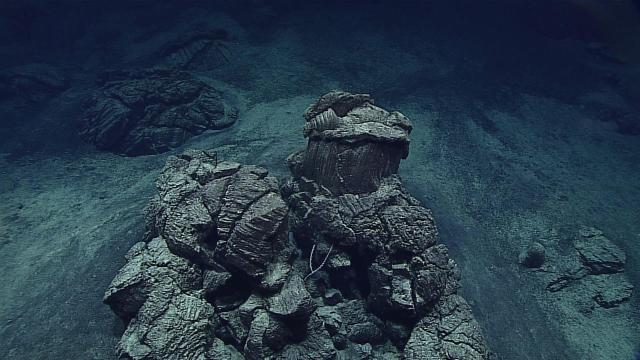In new research this week, scientists say they’ve unearthed a viral denizen from the depths of the Mariana Trench. The virus is believed to be the deepest of its kind ever discovered and preys on certain bacteria.
The Mariana Trench, named after the nearby islands, is found in the Pacific and is the deepest oceanic trench on Earth, going as far down as 36,000 feet underwater. But even in this almost otherworldly habitat, living things have learned how to thrive. Scientists have discovered fish, shrimp, and an assortment of microbes in the Mariana Trench. And where there’s life, there are usually viruses looking to take advantage of it (to this day, it’s debated whether viruses should be considered living, since they can only reproduce by hijacking the machinery of other organisms). But there’s so little we know about these deep sea viruses, let alone how many are out there.
This new virus was discovered by researchers from China and Australia and has been named vB_HmeY_H4907. The scientists isolated it from sediment brought up from a depth of 8,900 meters, or over 29,000 feet. Based on their genetic analysis, the virus is part of a previously unidentified family of viruses that’s widely distributed throughout the oceans, which the team is calling Suviridae. It’s also a bacteriophage, a virus that uses bacteria to make more of itself. The team’s findings were published Wednesday in the journal Microbiology Spectrum.
“To our best knowledge, this is the deepest known isolated phage in the global ocean,” said study author Min Wang, a virologist at the Ocean University of China, in a statement from the American Society for Microbiology, publishers of the journal.
The virus specifically infects Halomonas bacteria, a group of bacteria known to live in deep-sea environments and near hydrothermal vents. But the pair seem to have a relatively friendly relationship. The virus is actually very genetically similar to its host and is a lysogenic phage, meaning that it inserts its genetic material into the bacteria but usually doesn’t kill it; instead, both virus and bacteria replicate at the same time. The researchers theorize that vB_HmeY_H4907 might have co-evolved with these bacteria to ensure its survival in harsh conditions.
The team plans to further study the interactions between deep sea phages and their hosts on a molecular level. And they’ll keep searching for other strange viruses in the most inhospitable places on the planet.
“Extreme environments offer optimal prospects for unearthing novel viruses,” said Wang.
While the unearthing of a mysterious ocean microbe unknown to man might seem like the perfect start to a horror movie, it should be noted that viruses in general are highly adapted to their hosts and environments. In other words, it’s pretty unlikely that a deep sea phage would somehow become dangerous to humans on land if we ever came across it (terrestrial phages, meanwhile, are being studied and used as a potential weapon against drug-resistant bacteria).
